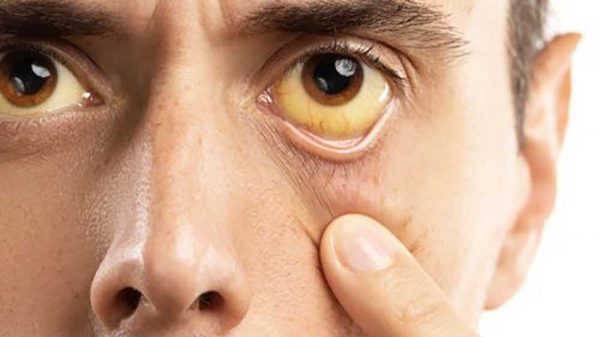Have you undergone an Aminotransferase (AST) test? This is a critical test to check ast sgot levels and liver damage. It’s used to diagnose people with liver disease and monitor their progress. Fun Fact: Scientists first described the AST test in 1954. Over six decades later the test is still being used to check liver health. The test’s old-school name was SGOT, which stands for “serum glutamic-oxaloacetic transaminase.” Even if you haven’t been diagnosed with liver disease it’s important to know whether or not you might have the disease. There are various tests that are conducted to determine that including blood, imaging, and liver function tests. This is one of the various blood tests that are conducted to determine if someone should be diagnosed with liver disease.
AST is actually a type of enzyme, which itself is a kind of protein. These tests are done. When there’s damage to tissue where the AST proteins exist like the liver then it’s a sign that there’s liver damage or other types where the AST is. It’s also found in other areas like kidneys, heart, and brain. When we hear terms like “AST” and “SGOT” it can seem really complex. The good news is your doctor can help to sort things out.
What Is Aspartate Aminotransferase?
This is also known as AST. If you have a test conducted involving this enzyme then it’s important to know what it’s all about. AST is found in various tissues throughout the body. An enzyme itself is a kind of protein that helps trigger certain chemical reactions required by the body in order to work properly.
The most AST in the body is found in certain areas like:
- Blood Cells (Red)
- Brain
- Heart
- Kidney
- Liver
- Muscles
In most situations, there’s a small amount of the enzyme flowing in a person’s bloodstream. If you have amounts that are above average then it could be a sign that you have a certain health condition. They can also be linked to liver problems like an injury.
Here’s what happens. When there’s cell/tissue damage in an area where the enzyme exists then AST levels could be higher. In fact, this can happen as soon as 6 hours after tissue damage takes place.
It’s actually common for infants to have higher AST levels compared to the usual ranges for older kids, teens, and adults.
The AST test is done to measure how much AST is in the blood that injured tissue releases. If you see the term SGOT this is just an old name that refers to the same test. So there’s no need to wonder if the two tests are different.
So what is the AST test all about? Doctors typically use this test in order to learn about a patient’s liver conditions like hepatitis. In many cases, doctors order this test with another one known as ALT. If you have abnormal ALT figures usually are more probably linked to liver injury versus abnormal AST figures.
What about the case that AST levels show up abnormal yet ALT levels show up normal? In that case, the problem is probably a muscle/heart issue rather than a liver condition.
What Do AST SGOT Levels Show?
Blood tests for liver conditions are some of the most common types of blood tests. They can be used to evaluate liver function/injury. The first step is to have a basic blood test to learn the number of liver enzymes/proteins that are in the patients’ blood.
In most situations, the enzymes are mostly in the liver cells. However, when a person has liver problems the enzymes then move into the blood. Enzymes are important for a single function. They can help to speed up important chemical processes within the body.
AST/SGOT and ALT/SGPT are some of the most frequent types of liver enzymes. Usually, there’s a small amount in liver cells and even fewer in muscle cells. However, tall of that changes when the liver gets injured/damaged. In that case, the AST/ALT enzyme levels rise in the blood. This is a sign of liver disease.
There are other blood tests that test various other liver enzymes. Besides AST/ALT there are various other enzymes that exist in the liver. They include GGT and others with fancy names.
When you get AST/SGOT test results the normal range is around 5 units/liter to 40 units/liter. These figures refer to the blood’s liquid part.
Then there are the ALT/SGPT enzymes. The normal range is about 7 units/liter to 56 units/liter. If you get results within this range then it shows you aren’t showing any signs of liver disease.
There’s a caveat. The test results can differ a little based on various factors. They include the techniques/protocols that labs around the world use. Each lab usually provides the normal ranges. You can also see them printed on the patient report.
What if you have high AST/ALT levels? This is often a sign of liver damage/injury from various causes including conditions. It’s worth noting that above-average figures don’t mean there’s a 100% chance you have liver disease.
Top Tips for Healthier Liver
1. Avoid being overweight/obese
Make sure to avoid obesity and especially belly fat. The reason is that these factors can boost your risk of liver disease. Besides eating right and exercising regularly you should also be one of the weight watchers so you won’t boost your risk of the liver condition. Even being slightly overweight can be unhealthy.
2. Eat a healthy diet
This is something to do anyway but especially if you want to avoid/manage the liver disease. In particular, make sure to reduce your fat/cholesterol intake. These are some of the top causes of fatty liver disease so it’s critical to consume less of the substances.
You should also make sure to avoid certain kinds of fats like saturated and trans fats. These are some of the unhealthiest types you can consume. Go with healthier unsaturated fat.
3. Exercise regularly
Make sure to exercise most days of the week to achieve a healthier liver. This helps to reduce liver stress. You can also get other benefits like obesity prevention and energy boosts. These are both risk factors for getting liver disease.
Try to exercise 150+ minutes per week. This doesn’t have to be a marathon or triathlon. You could even do some basic exercises like walking, jogging, stair-climbing, or bicycling. The key is to keep moving so your body stays healthy.
4. Don’t be a heavy drinker
If you’re going to drink alcohol then make sure it’s in moderation. The reason is each hour the liver is only able to break down a small amount of alcohol. Besides that, you can experience problems like inflammation and even scarring (cirrhosis).
How much should you drink? In general, most should be one can/bottle of beer or one glass of wine. This can help to prevent/manage liver disease after learning your AST SGOT levels.























